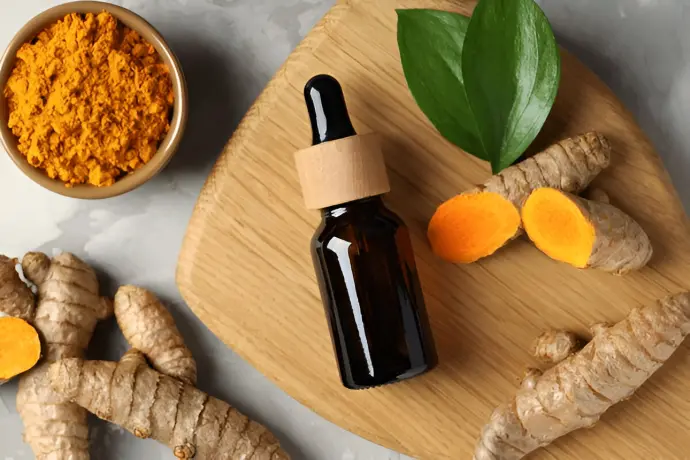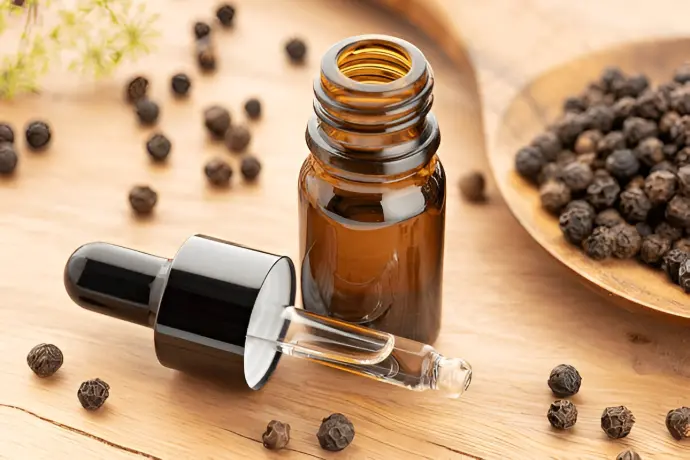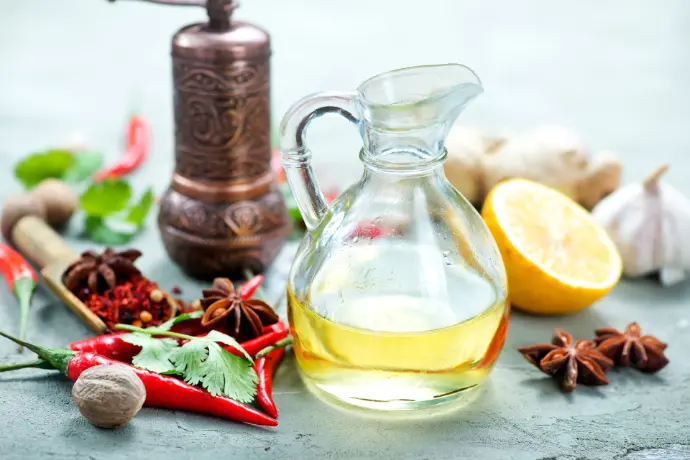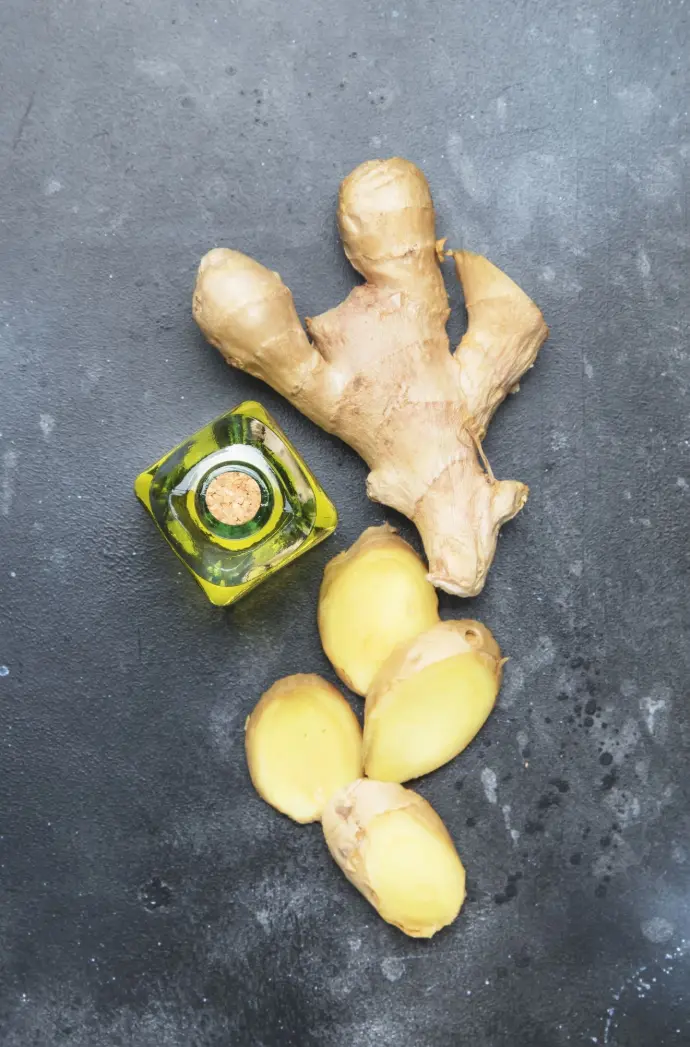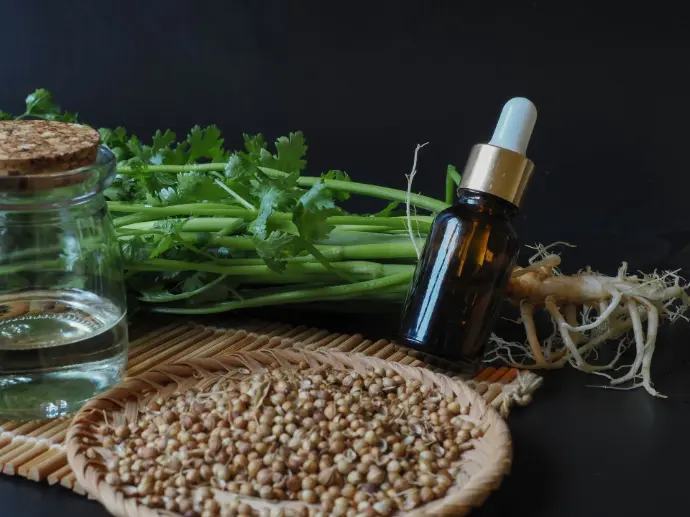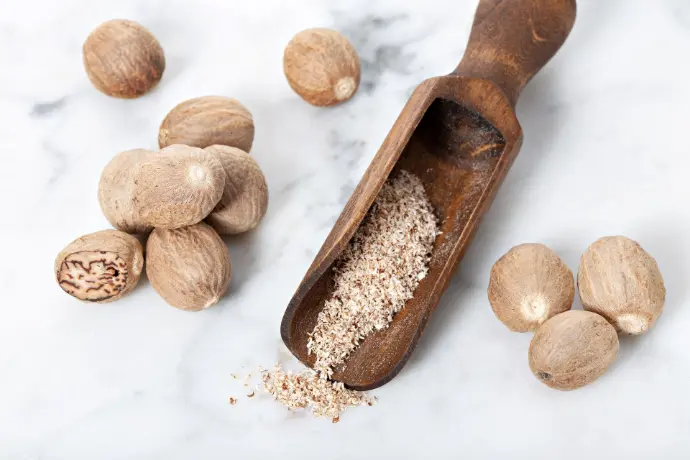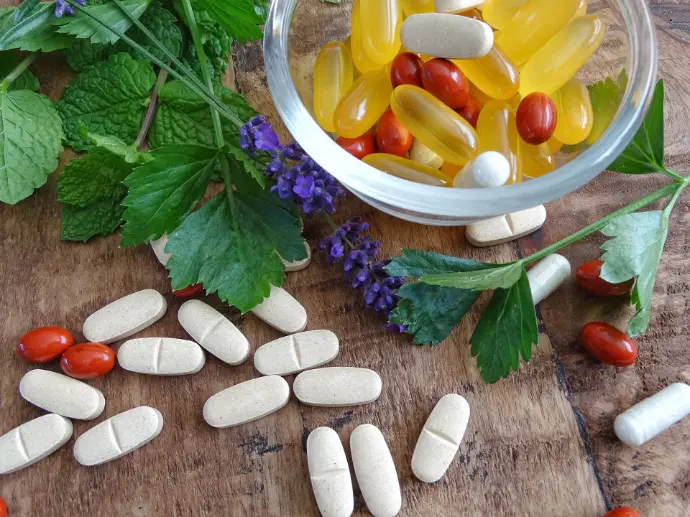About Product
A natural product often drawn from sweet basil, Ocimum basilicum, ranges from kitchen garnishes in Italian cooking to traditional remedies across Central Africa and Southeast Asia. Botanically, the species sits comfortably within the mint family, Lamiaceae, and its bright green leaves carry a distinctly aromatic scent that has been described as both sweet and lightly balsamic with a hint of camphor.
Industrial processors sometimes pair this culinary heritage with more modern methods: the dried leaves can be distilled with supercritical carbon dioxide, yielding a dark olive-coloured oleoresin that pours like thick oil. A gas-chromatography profile of that extract usually shows a-pinene, myrcene, limonene, camphor, and smaller amounts of eugenol, terpineol, geraniol, chavicol, and linalool.
Herbalists value the oleoresin for its calming effect on nervous tension and for moderate support of blood-sugar and cortisol balance. Pharmacologists cite its antioxidant, antibacterial, and anti-inflammatory properties, noting that it also stimulates metabolism and reinforces immune function.
Clinically, practitioners may apply the resin to joints troubled by arthritis or bursitis, and athletes sometimes use it to ease minor sprains while rehabilitation unfolds. Although the relief is gradual, many patients report less irritability and a noticeable reduction in everyday aches.
Preliminary observations suggest the compound may relieve stress and anxiety, temper low-grade depression, and lessen general irritability. It appears to reduce inflammation by inhibiting COX-2 enzymes and may dull minor aches. The blend also shows antioxidant activity and, according to some subjects, sharpens mental focus. Athletes report that it boosts performance and extends endurance, perhaps by helping other botanicals work more efficiently in a given formula.
Composition
- Linalool: Offers a fresh, floral aroma and powerful anti-inflammatory and calming properties.
- Methyl Chavicol (Estragole): Provides the characteristic anise-like scent.
- Eugenol: Known for its analgesic and antiseptic effects.
- Other Constituents: Terpenes, flavonoids, tannins, and small amounts of camphor.
Physical Characteristics
- Appearance: Dark green to olive brown viscous liquid.
- Odor: Sweet, herbaceous, slightly spicy with notes of clove and anise.
- Taste: Pungent, slightly sweet, and aromatic.
Health Benefits
- Respiratory Support:
- Acts as an expectorant and bronchodilator, useful in cough syrups and cold relief formulations.
- Mental Clarity & Stress Relief:
- Linalool and methyl chavicol offer adaptogenic effects—helping reduce stress, fatigue, and improve focus.
- Anti-inflammatory & Antimicrobial:
- Eugenol and flavonoids reduce inflammation and fight microbial infections on skin and internal tissues.
- Digestive Support:
- Basil oleoresin improves digestion and reduces gas, bloating, and stomach cramps.
- Skin Protection:
- Soothes irritated skin, treats acne, and prevents microbial breakouts with its antiseptic properties.
Basil oleoresin is widely regarded as a concentrated flavoring and scent component. Food scientists note that only a small amount can transform plain oils and syrups into compelling, garden-fresh blends.
Laboratory trials have linked the extract to unusually high levels of antioxidant activity. Animal studies suggest that the material may suppress harmful bacteria, slow viral replication, stabilize blood-glucose spikes, and ease several kinds of tissue inflammation.
Chemical fingerprints show the oleoresin contains alpha-pinene, myrcene, limonene, camphor, and eugenol in varying proportions. Clinical observers say those compounds work together to calm anxiety, lighten mild depression, trim stress hormones, and keep blood-sugar levels within a healthier range.
Key Features
- Source: Basil leaves (Ocimum basilicum).
- Active Ingredients: Linalool, methyl chavicol, eugenol.
- Physical Form: Thick, green to brown viscous liquid with sweet herbal scent.
- Applications: Food, pharma, cosmetics, fragrance.
- Health Benefits: Respiratory aid, stress relief, antimicrobial, digestive support, skin benefits.
Application
Food Industry:
- Used as a natural flavoring agent in sauces, soups, spice mixes, and seasoning oils.
- Ideal for Italian, Mediterranean, and Southeast Asian cuisines for its distinctive herbal kick.
Pharmaceuticals & Nutraceuticals:
- Incorporated in herbal capsules, teas, and extracts for respiratory health, digestion, and mental clarity.
- Acts as a natural remedy for colds, stress, and inflammation.
Cosmetics & Personal Care:
- Added to skin creams, lotions, and hair oils for antibacterial and anti-acne properties.
- Helps cleanse skin, control oil, and tone the scalp.
Fragrance Industry:
- Used in perfumes, soaps, candles, and air fresheners for its refreshing and uplifting scent.
ALSO USED AS
FLAVORING DESIGNATION
Basil oleoresin lends a rich, peppery note to sauces, marinades, and dressings. It is also incorporated into personal-care formulations and appears frequently in folk remedies.
AROMATIC USAGE
Aromatherapists favor basil oleoresin for its sharp, green aroma. The semi-liquid extract shows up in perfumes, room sprays, inhalers, and traditional Ayurvedic blends.
THERAPEUTIC APPLICATION
Clinicians and herbalists reach for basil oleoresin to ease nausea, motion sickness, and spasmodic cough. It finds a place in mixtures aimed at digestive discomfort, joint inflammation, and certain skin infections.
NUTRITIONAL PROPERTIES
Laboratory studies credit the oleoresin with antioxidant, antibacterial, antiviral, and antifungal activity. Nutraceutical manufacturers use the extract in capsules, tablets, and functional food powders.

